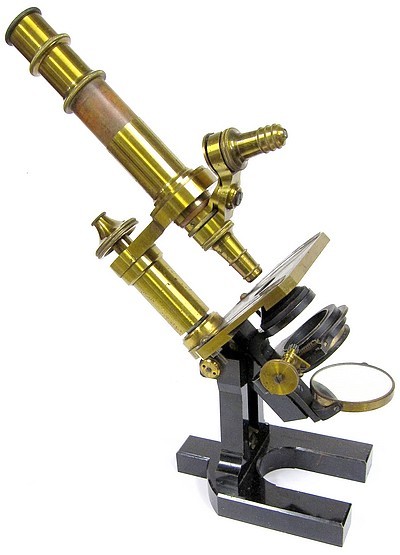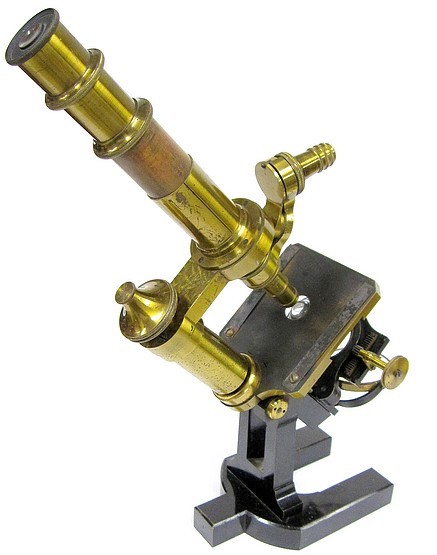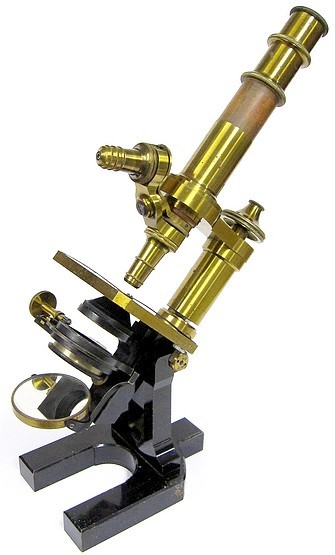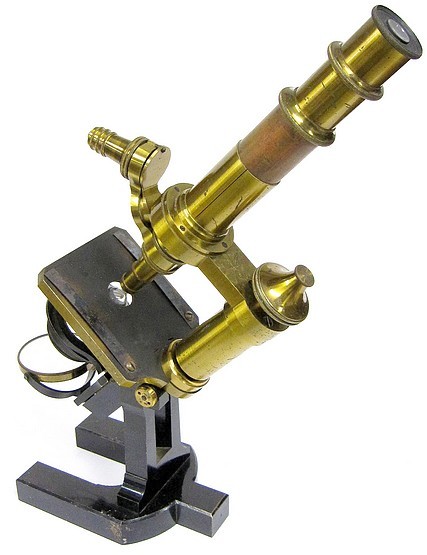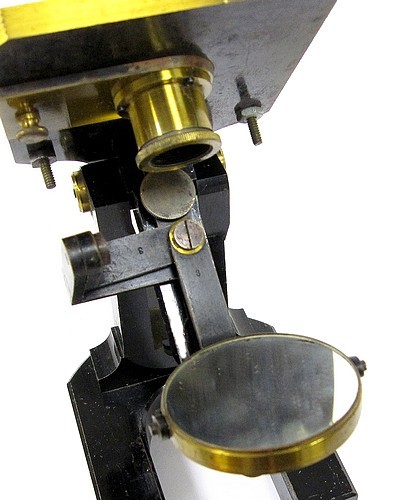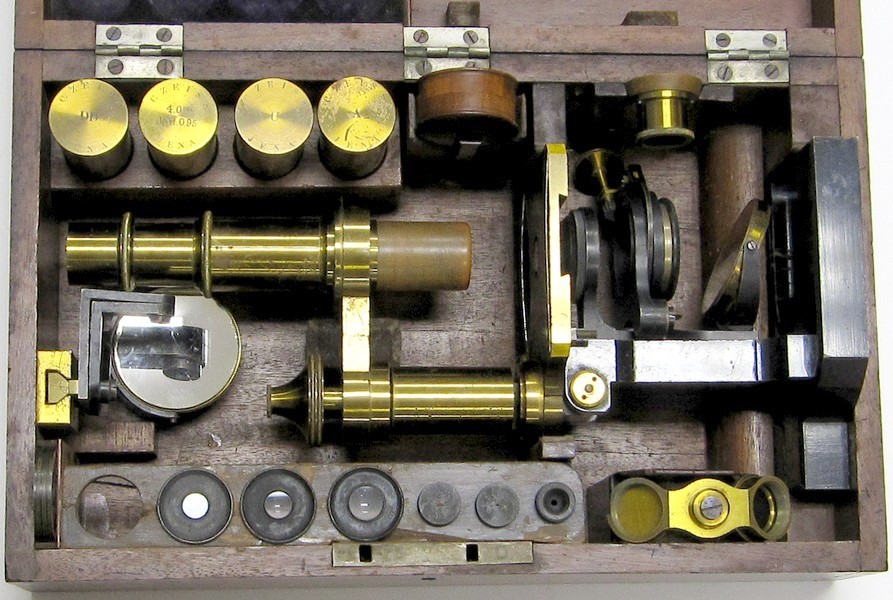
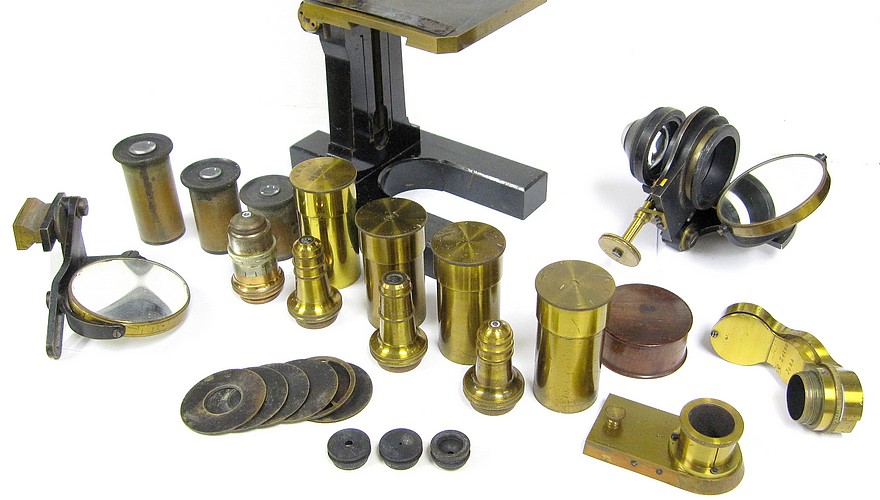
The accessories include
three eyepieces numbered 2, 3, and 4, four objectives
with canisters marked A, DD, C, and 4 mm apert. 0.95,
an early form of Abbe condenser with double mirror
attached, an alternate mirror assembly for use with
the slide-in aperture stop holder with three stops, a
series of stops for use with the Abbe condenser, a
double objective changer, and a treen box which now
holds some cover glasses.
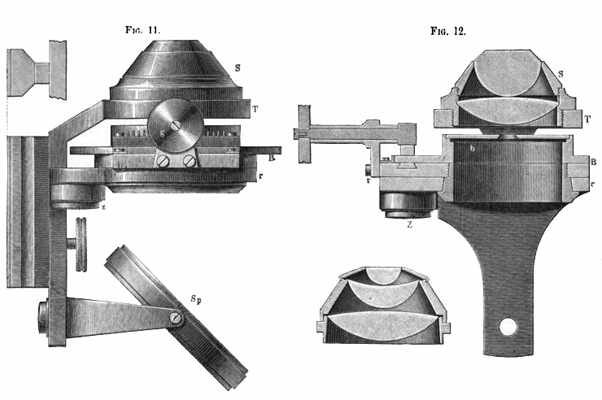
Early form of
the Zeiss Abbe condenser
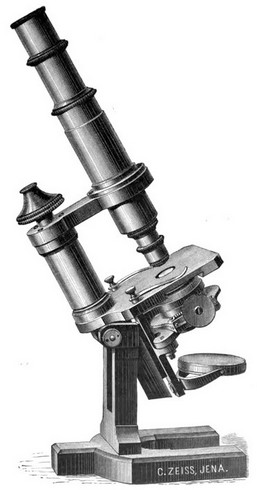
Zeiss
microscope Va
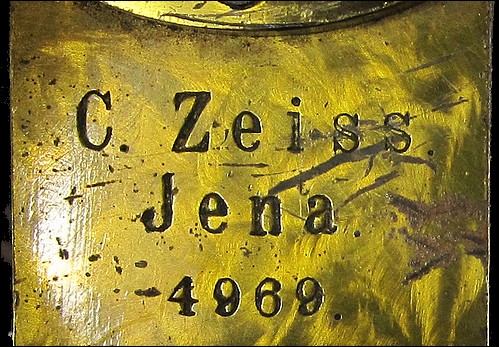
The Zeiss archives
indicate that the microscope with serial number 4969
is the Va model. It was purchased by Dr.
Georg West in Vienna on April 22, 1881. It was
originally supplied with oculars 2, 3, and 4 and
objectives A, D, and DD. It was purchased for this
collection in the USA.

The following was
extracted from The Naturalist's Assistant: A
Handbook for the Collector and Student by J. S.
Kingsley, 1882
In the writer's
opinion, one of the best stands for all ordinary work
is the smaller compound microscope manufactured by
Carl Zeiss of Jena and designated by him as "Va".
This stand alone costs ninety marks ($22.50) and when
furnished with four eye-pieces and three objectives,
A, C, D, F, giving powers of 20-1500 diameters, sells
for three hundred and twenty marks ($80.00). This
instrument will answer all the requirements of the
naturalist or histologist in any special
investigation. The ordinary student, however, does
not need these higher powers, and the same stand with
three eye-pieces and the objectives "A" and "D" (1
inch and 1/4) will answer all ordinary requirements
and is sold for one hundred and seventy marks (about
$42.50).
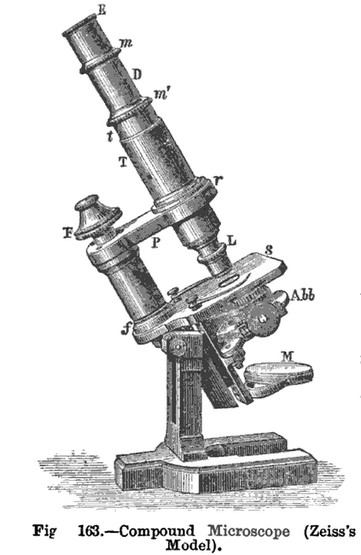
This model is illustrated and described in The Elements of Physiological Physics, 1884 as follows:
Fig. 163 represents a compound microscope of Zeiss's model. It consists of a firm foot which supports an upright stand. The stand is jointed so as to permit of the microscope being inclined or placed horizontally. From the stand projects a horizontal arm P, terminating in a ring r, in which is screwed a tube T. This tube is split so as to permit the lens tube to slide up and down easily. The lens tube consists of an outer tube t, movable up and down in the split tube t, by means of the milled edge m'. Fitting into the tube tL and also movable in it, is a second tube D, which is called the draw-tube, and is pushed home into t, or drawn out, by the milled edge w. E points to the outer end of the eye-piece which fits into D. At the other end L of the microscope tube is a screw adjustment which permits of the lenses being screwed on or off the tube, s is the stage on which the object to be examined is laid, and on it are two little spring slips for holding down the slide on which the object lies. In the centre of the stage is pierced an opening through which light can be directed by the mirror M, placed a little distance under the stage and movable in all directions. Under the stage is a disc pierced with openings of various sizes, the smallest no larger than a pin-head, any one of which can be brought under the opening in the stage. It thus acts as a stop, and regulates the quantity of light, aiding in definition with high powers by cutting off the outside rays. Under the stage is fitted Abb, a condenser, an arrangement of convex lenses for concentrating the light from the mirror on the object and so increasing the illumination. The form used in Zeiss's microscopes is Abbe's, and can be removed or replaced at pleasure. It is specially serviceable for high powers. There are two focussing arrangements in such an instrument. The coarse adjustment is made by grasping the milled edge m’ with finger and thumb of one hand, the other hand steadying the foot of the instrument, and, by means of a slightly turning movement, slowly moving t down or up the split tube as may be desired, thus bringing the lenses nearer to or taking them farther away from the object. The object having been brought into view, accuracy of definition is obtained by a slight turning, in one direction or in another, of the fine screw f, the fine adjustment. By this screw the whole body of the instrument above is moved up or down on a pillar, and so focussing is effected.
